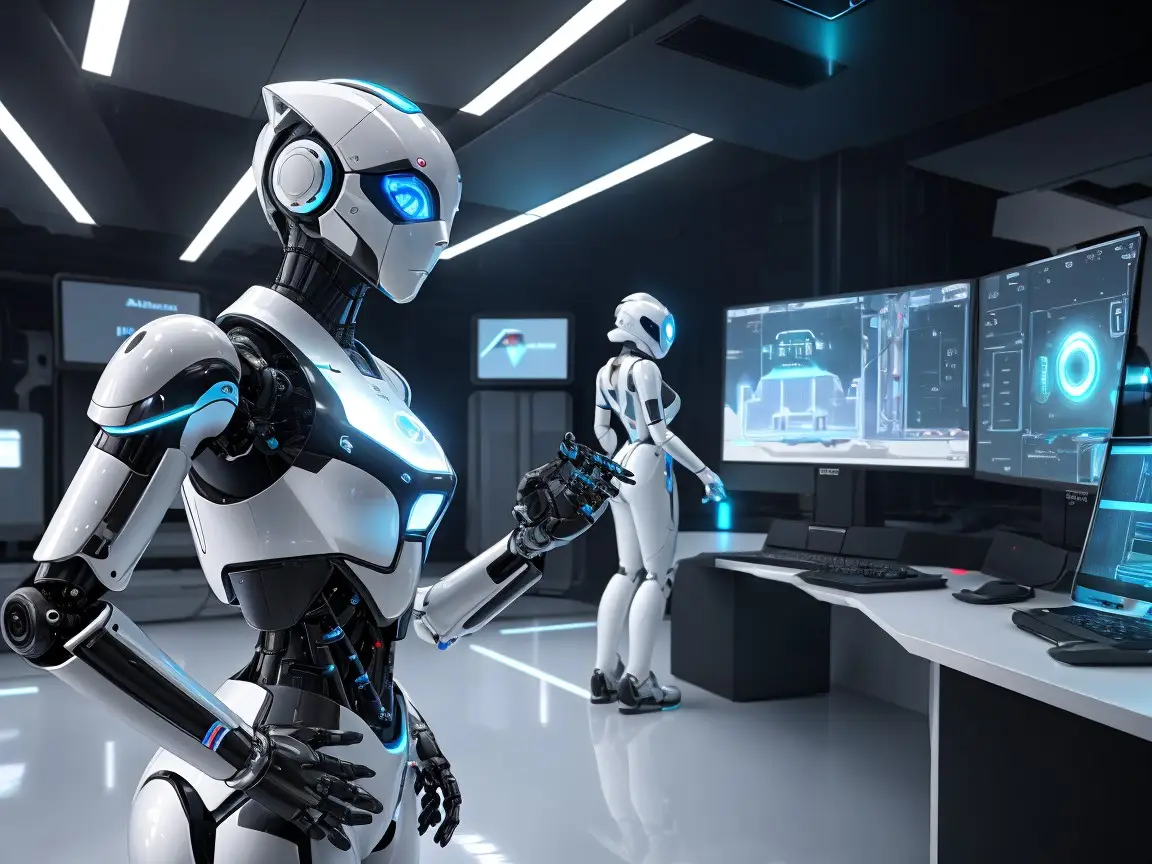In recent years, the integration of Artificial Intelligence (AI) with robotics has become one of the most transformative advancements in engineering. AI empowers robots to learn from their environment, make autonomous decisions, and adapt to dynamic situations, increasing their efficiency and versatility. In this tutorial, we’ll guide you through the process of integrating AI into robotic systems for improved automation, smarter decision-making, and enhanced performance.
1. Understanding AI and Robotics 🤖
Before diving into the integration process, it’s essential to understand both AI and robotics separately:
- Artificial Intelligence involves the simulation of human intelligence in machines. It enables robots to interpret data, recognize patterns, and make informed decisions.
- Robotics, on the other hand, involves the design, construction, and operation of robots. Robots are machines that perform tasks autonomously or semi-autonomously based on programmed instructions.
The marriage of these two technologies allows robots to go beyond basic programming and become capable of performing complex tasks in unstructured environments.
2. Key Components for AI-Driven Robotics 🔧
To integrate AI into robotics, you need to understand the key components involved:
Sensors and Perception Systems 🧐
- Sensors allow robots to perceive their environment. These include cameras, infrared sensors, LiDAR, and ultrasonic sensors that feed data to the AI system for analysis.
- Perception systems process this sensory data, enabling the robot to understand the world around it in real-time.
Machine Learning Algorithms 📊
- Machine learning (ML), a subset of AI, enables robots to learn from data. Through supervised or unsupervised learning, robots can improve their performance over time by recognizing patterns and making predictions.
- Popular algorithms used in robotics include Deep Learning (DL), Reinforcement Learning (RL), and Support Vector Machines (SVM).
Robot Control Systems ⚙️
- The control system is responsible for translating AI decisions into physical actions. It connects the robot’s AI brain with its motors, actuators, and other mechanical components.
- Control theory such as PID controllers and model predictive control (MPC) ensures that the robot’s movements are smooth and accurate.
Edge Computing 🖥️
- For real-time decision-making, robots may use edge computing, where data is processed locally on the robot rather than relying on cloud-based systems. This reduces latency and improves performance.
3. Step-by-Step Guide to Integrating AI in Robotics
Step 1: Select the Right Robot Platform 🤖
The first step in integrating AI with robotics is selecting an appropriate robot platform. Choose a robot that has a modular design, with easily integrable sensors, actuators, and communication interfaces.
- Example: A mobile robot with wheels or legs for navigation, equipped with cameras for visual perception.
Step 2: Choose the AI Framework 💡
AI frameworks and libraries provide the building blocks for integrating machine learning algorithms into the robot’s control system.
Popular AI frameworks include:
- TensorFlow (Google)
- PyTorch (Facebook)
- OpenAI Gym for reinforcement learning
- ROS (Robot Operating System): An open-source framework that allows integration of AI algorithms with robot hardware.
Step 3: Implement Machine Learning Models 📈
Once you have your AI framework, the next step is to implement machine learning models that allow the robot to learn and make decisions.
- Example: For autonomous navigation, use Convolutional Neural Networks (CNNs) to process images and allow the robot to identify obstacles.
- For tasks like grasping or sorting, Reinforcement Learning (RL) can help the robot optimize its movements through trial and error.
Step 4: Train the AI System 🏫
Training the AI involves feeding it large datasets to help the system recognize patterns. For example, if your robot is being trained for object detection, you’ll need a dataset of images with labeled objects.
- Example: Use Simulated Environments like Gazebo or V-REP for robot training in virtual spaces before deploying in the real world.
Step 5: Implement Feedback Loops and Control Systems 🔄
Once your robot can make decisions based on AI, you need to implement feedback loops to ensure the robot’s actions are accurate. This involves combining AI outputs with feedback from sensors to refine the robot’s movements.
- Example: If your robot fails to avoid an obstacle, it should adjust its path using feedback from its proximity sensors and retrain its model over time.
Step 6: Test and Optimize 🛠️
Testing is a critical step to ensure the robot performs effectively in different environments. Optimize the AI algorithms for real-time performance by adjusting hyperparameters and refining data collection methods.
- Example: Test the robot in various real-world environments (indoor, outdoor, cluttered, etc.) to ensure robustness.
4. Challenges in AI and Robotics Integration 🔧
While AI can greatly enhance robotics, there are several challenges to overcome:
- Data Quality: AI algorithms require high-quality data to perform well. Inaccurate or biased data can lead to poor decision-making by the robot.
- Real-time Processing: For tasks that require immediate action, real-time AI decision-making can be challenging due to processing delays.
- Safety and Reliability: Ensuring that AI-driven robots are safe and reliable in real-world environments is crucial, especially in sectors like healthcare and manufacturing.
5. Applications of AI in Robotics 🚀
The integration of AI in robotics has enabled the development of robots that perform tasks autonomously with greater efficiency and flexibility. Some of the most common applications include:
Autonomous Vehicles 🚗
AI is central to the development of self-driving cars. Robots, such as autonomous vehicles, rely on sensors, cameras, and machine learning algorithms to navigate and make real-time decisions.
Industrial Robots 🏭
In manufacturing, AI-powered robots automate tasks like assembly, packaging, and material handling. These robots adapt to changes in production, improving efficiency and reducing downtime.
Medical Robotics 🏥
Robots in healthcare, like the Da Vinci Surgical System, are enhanced by AI to perform precise surgeries with real-time feedback, making procedures safer and more efficient.
Conclusion
Integrating AI with robotics is transforming industries, making systems smarter, more adaptive, and more efficient. By combining machine learning, perception systems, control theories, and feedback mechanisms, engineers can design robots that learn, evolve, and perform complex tasks autonomously. While challenges exist, the future of AI-driven robotics is bright, with applications in healthcare, autonomous vehicles, manufacturing, and beyond.
Internal Links:
External Links:
- Learn more about AI in robotics at IEEE Robotics & Automation Society.
- Explore TensorFlow for Robotics at TensorFlow.

